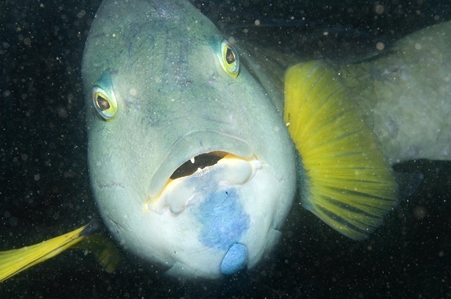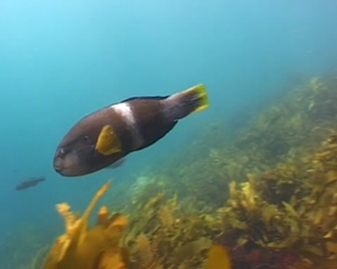General Description
Body moderately deep, snout rounded. Juveniles and females are greenish or brown, paler below, gradually developing a broad dark band on the sides and behind the pectoral fin; scales large with pale centres; as females mature they develop a distinct white band behind the dark band on their sides. Males brown to bluish grey with a bluish head, a blue throat and yellow pectoral and pelvic fins. To 50 cm.
Biology
This is the most common wrasse species in Victorian and Tasmanian waters. It is frequently caught on hook and line, and is also taken in trawls and with commercial gillnets. Bluethroat Wrasse change sex from female to male during their life cycle and are sexually dimorphic in colour.
Habitat
Adults usually on deep exposed rocky reefs, juveniles in shallower weedy areas, in depths of 1-160 m.
Reefs
Distribution guide
South-eastern Australia.
Species Group
Fishes › Wrasses, rock whitings and allies
Depth
Shallow (1-30 m)
Deep ( > 30 m)
Water Column
Max Size
50 cm
Commercial Species
Yes
Global Dispersal
Native to Australia
Identify
Conservation Status
- DSE Advisory List : Not listed
- EPBC Act 1999 : Not listed
- IUCN Red List : Least Concern











